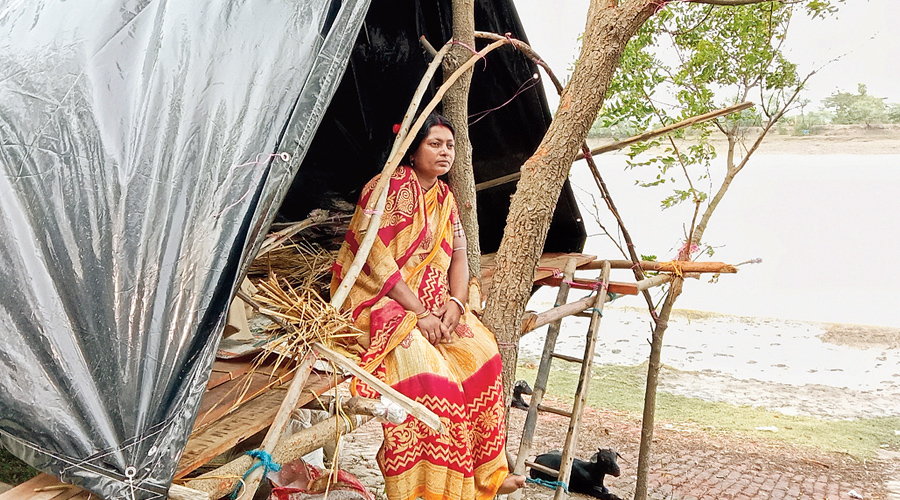Standing amidst the 360-degree devastation wrought by Cyclone Yaas, Bankim Mondal, from Kumirmari in the Sunderbans, echoed what Barack Obama, the former US president, said years back: “[w]hen disaster strikes, it tears the curtain away from the festering problems that we have beneath them”. But such a ‘tearing’ hardly helps the Sunderbans as governments across political lines replace the torn curtains with fresh ones (read committees and consultations) and continue to keep the problems under wraps. Post Yaas, the trend continues with the formation of several well-publicized committees.
Consider Ghoramara and Mousuni, two highly vulnerable islands in western Sunderbans. More than half of the Ghoramara and two-thirds of the Mousuni riverbanks still lack effective embankments. Forget an Amphan or Yaas, even routine high tides inundate the sea-adjacent villages, putting thousands into the doldrums of daily disaster. Do we need committees and consultations to know that Ghoramara and Mousuni need effective embankments?
For an effective embankment prescription, we perhaps need not look beyond the Sunderbans. After Aila struck in 2009 — a warning bell that the island with nearly five million people and unparalleled biodiversity was turning into a hotbed of climate change related activities like high intensity cyclones and rising sea level — the cry for concrete embankments became louder. The Aila embankment, a marriage of mud, brick and concrete, was cleared by a specialized task force. A decade later, 84 kilometres of Aila embankments stood strong both in the face of Amphan and Yaas, while mud embankments of over 3,000 km were breached at numerous points. Ironically, around 80 per cent of the Rs 5,000 crore cleared by the Manmohan Singh government to build 778 km of Aila embankments was returned to the Union government as the state irrigation department failed to build more Aila embankments, citing people’s refusal to give their land as the reason.
The claim does not add up. Out of the 6,000 acres required for building the 778 km of Aila embankments, around 2,000 acres were acquired — close to two-third of the acquired land has not been utilized so far. While finding answers to what happened to the acquired unused land is important, the bigger question to grapple with is why the successful Aila embankment model was not replicated elsewhere in the Sunderbans, especially in areas being repeatedly impacted. No surprise that the demand for concrete embankments has resurfaced after Yaas.
On countering disasters, setting effective mechanisms in place needs closer deadlines. We need to pursue holistic but pragmatic steps, rather than brainstorm on long-term, big-ticket, difficult-to-implement options. The need to study and plan for the long-term sustainability of the Sunderbans is important, but saving lives and livelihoods immediately is urgent. Many thousands have collapsed houses and have suffered livelihood losses at least three times over the last 18 months; they need to be protected now. Some experts claim that the Sunderbans do not qualify to be a human habitat, others recommend mass resettlement of millions. Academically valid discourses, but of little relevance to present reality.
The physical and socio-economic resilience of the area needs to be enhanced. The disasters will increase but people should be better prepared to counter them. Can we not think of building at least one raised pucca room per family with a concrete roof, or setting up intensive water transport instead of costly bridges and legally permissible industries using local bio resources so that local people get jobs, or introducing insurance to protect lives and livelihoods, or modifying types of crops and harvesting patterns so that they adapt better with changing climatic factors? The list is long.
Resurrecting the Sunderbans is difficult but not impossible if the government and experts put their heads together. Let us fix 2030, even 2025 if possible, as the deadline to have actions on ground to save the Sunderbans; the future beyond that can wait.










